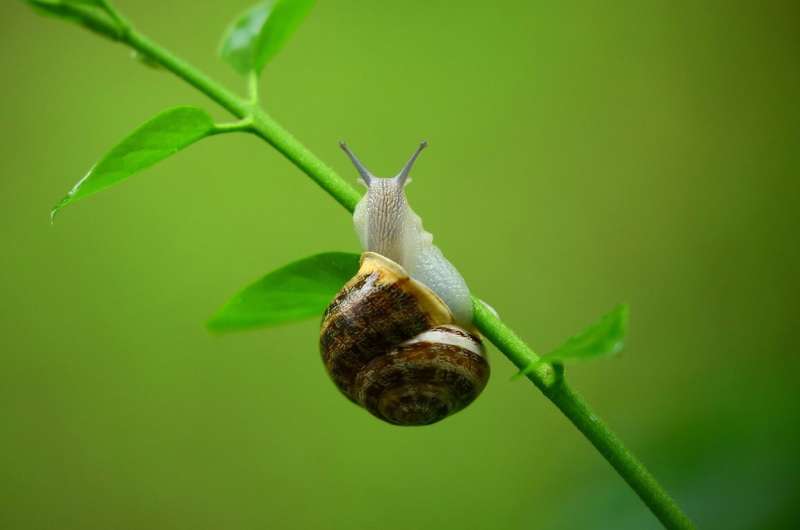

Extreme weather events can exert profound impacts on society, economy and environment. However, short instrumental data limits our understanding of their mechanism and the evaluation of climate models.
The time resolution in traditional paleoclimate studies is usually in months or even longer time, which makes it impossible to reveal extreme weather events that happened at daily to hourly scales.
A research group from the Institute of Earth Environment of the Chinese Academy of Sciences (IEECAS) used land snail shells for extreme weather reconstruction. The study was published in Geochimica et Cosmochimica Acta on May 5.
The group has established several daily-hourly resolution proxies from the marine giant clam shells of Tridacna species using Confocal laser scanning microscope (CLSM) and nano scale secondary ion mass spectroscopy (NanoSMIS).
Now, they further applied these techniques to terrestrial environment. They established a daily-weekly resolution land snail shell oxygen isotope (δ18Os) sequence, which could well reconstruct weather scale precipitation events in the study region.
The Cathaica Fasciola snails are readily available in IEECAS and are selected for ultra-high resolution (~30 micron) δ18Os analysis.
Meanwhile, the precipitation amount and its oxygen isotope compositions were monitored at the campus of IEECAS since 2019. The researchers found that the variations of the ultra-high resolution δ18Os sequence resemble the monitored changes in precipitation (i.e., amount and oxygen isotope), and both oxygen isotope records showed a negative trend from April 2020 to September 2020.
Moreover, the six negative excursions in δ18Os matched well with six time periods of increased precipitation in detail. And there was a strong correlation between the oxygen isotope data of precipitation and snail shell for the six events, suggesting the potential for quantitative reconstruction of precipitation amount using the negative δ18Os data.
This evidence demonstrates that land snail shells are valuable and promising ultra-high-resolution archives for characterizing terrestrial paleoweather, such as extreme precipitation events.
The widely distributed and well-preserved fossil snails in the loess-paleosol sequences on the Chinese Loess Plateau are of great potential in paleo extreme precipitation event reconstructions.
Thus far, the research group have collected a large amount of fossils from various climatic background, and the related paleoweather studies are still on going.
Land snail shells help to reconstruct quantitative temperature
Jibao Dong et al, Ultra-high resolution δ18O of land snail shell: A potential tool to reconstruct frequency and intensity of paleoprecipitation events, Geochimica et Cosmochimica Acta (2022). DOI: 10.1016/j.gca.2022.04.015
Chinese Academy of Sciences
Citation:
Land snail shell: A recorder of weather scale precipitation events (2022, May 6)
retrieved 6 May 2022
from https://phys.org/news/2022-05-snail-shell-weather-scale-precipitation.html
This document is subject to copyright. Apart from any fair dealing for the purpose of private study or research, no
part may be reproduced without the written permission. The content is provided for information purposes only.